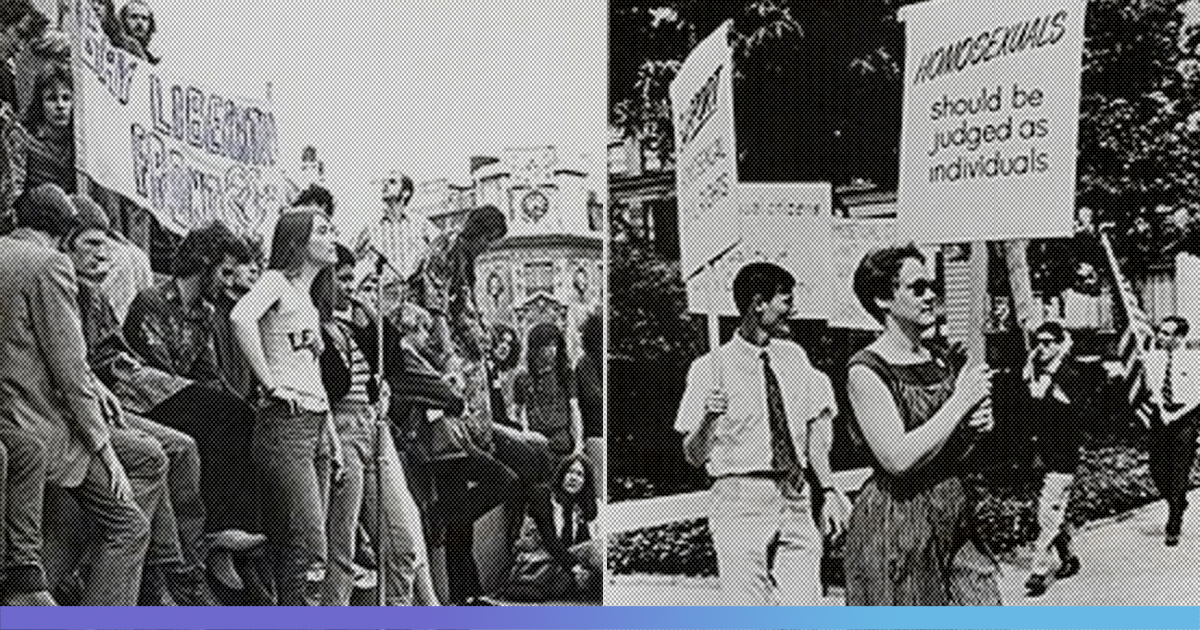In recent years, many countries including India have recognized third gender and homosexuals which were the result of many different movements and protests throughout the world. But, many of us don’t know about the origin of these movements and the reason behind the term ‘queer’.
Queer literally means strange, odd or unusual and is an umbrella term used to denote people who are not heterosexuals or cis-genders. The word queer was first used as a disparaging and offensive word for people who were homosexuals and transgenders in the late 19th century. Initially, the queer movement emerged to give safety and recognition to the sexual minorities in public and to protect them from the aversion which arose in public against them. But it is believed that queer movement is way more than just protecting the rights of LGBT, as gay and lesbian activists fight for the legal rights of sexual minorities whereas queer activists are more interested in claiming a right to city for sexual minorities.
History
Queer activism popularly known as “Queer Nation”, originally emerged during the AIDS crisis that took place in the US and anti-gay prejudice that arose in people. So to combat the AIDS crisis, a movement name ACT UP was started in the US. This early queer activism also challenged the marginality of sexual minorities in society and questioned the identity politics prevailing at that time in the US. Thus, this new queer movement provided a resistance to the “identity-based politics of representation.” In 1987, ACT UP emerged as a non-partisan and united group of radical AIDS activist committed to end the AIDS crisis which also challenged the discrimination against people suffering from AIDS and demanded access to medical treatment for them. “One of the main goals of ACT UP was to provide accessibility of affordable healthcare to people at the same time drawing the attention of administration towards the increasing homophobia. “The slogan ‘Silence Death’ was ACT UP’s rallying cry”. But, initially, Queer activism had different meanings in different cultures and it was not a universal movement as many activists who were involved in ACT UP and formation of the queer nation were sexually conservative and critical of gay men’s culture.
Shifting the focus from aids to the rights of queer
But in fighting the AIDS crisis, ACT UP never solely focused on prohibiting discrimination against AIDS, it also focused on fighting the growing aversion towards homosexuals in the society. In 1990, in an ACT UP meeting in New York, the activists found ACT UP movement was overburdened by the cases of AIDS, thus it became difficult for it to fight the homophobia. Also, there was an escalation in the number of cases of anti-gay violence in public places, so the activists of ACT UP movement decided to form an organization to curb these cases and to acknowledge the presence of homosexuals in society. Therefore, it was decided to form a Queer Nation with an aim “to expand the counter-public spaces that the ACT UP movement had created in relation to the AIDS activism to transform broader public discourses around sexuality. It aimed to transform the public places from the threat of violence towards sexual minorities so that they can feel secure at those places and to eradicate the growing homophobia among the people. Hence various programmes such as Suburban Outreach Homosexual Programme was started to make homosexuals presence visible in malls and other public places. These programmes were an effort to challenge the for-granted attitude of society towards homosexuals.
Later on, the ACT UP movement rapidly started growing in other cities of US and in three years it became a worldwide movement with different names like “Outrage” in Anglophonic countries against the increase in the number of crimes against homosexuals. In Australia, a branch of ACT UP was started though the political situation was different there but the aim of movement remained same i.e., fighting homophobia. Around the year 2000, countries like Israel had also seen queer activism based on the experiences of North America. Hence, Queer Nation movement started taking place in different countries in the aftermaths of different cases of growing aversion towards homosexuals.
Queer movement in India
Till this time, when the queer movement was getting globally acclaimed, India was also witnessing an increase in the number of cases of violence against homosexuals and transgender resulting in the initiation of the queer movement in India. Living under the shadows of draconian and archaic anti-sodomy law, and the weight of social norms of natural/unnatural sex, activists led to the birth of various movements against homophobia in India. In 1992, in an AIDS conference in New Delhi, around 200 delegates protested against the government’s stance on homosexuality. This simple act of protest forced the government to take healthcare actions for queer-identified persons. After this, the fight for the rights of LGBT took a new turn in India. Since then India has been continuing struggling for the rights of LGBT.
Hence, the queer movement became a widespread movement but at the same time, it has never remained a singular movement throughout the world. It grew at different places in a different time with different names. Though the purpose of all the movements remains the same, however, these movements were born under different political circumstances at different places.
Significance
In 1990, for the very first time in New York, an established norm of society was challenged, the binary culture (man/woman) that our society has been following since time immemorial was questioned for the very first time by the queer nation. The queer nation fought for the visibility of homosexuals so that they can be accepted everywhere in societies and to force people to accept them. Homosexuals started kissing in public places like malls, shops etc to show that people should get used to watching homosexuals around them and treat them as a part of their society. Therefore, the queer movement marks significance in the history of LGBTQ rights for not only establishing the rights of homosexuals and transgender but also establishing their identity and giving them recognition at public places.
The queer movement has been significant in the present scenario in establishing the rights of homosexuals. As of now, more than twenty-seven countries have legalized same-sex marriage. And more countries are adding into this list. Therefore, it can’t be denied that movements like the queer nation have played an indispensable role in giving them a new shape. But not every country has been successful in establishing rights for homosexuals. Though India has recognized third gender and homosexuals but till now has not legalized the same-sex marriage.
But the queer movement is of utmost significance as it was of the first recognized movements which fought for the rights of sexual minorities and as a result, many countries have been successful in providing rights to sexual minorities.
Also Read: Transvision: Fighting Misconceptions Around Trans Community, One Youtube Video At A Time












